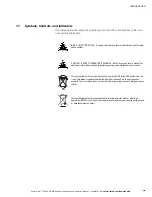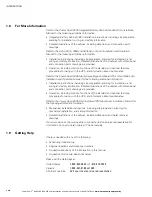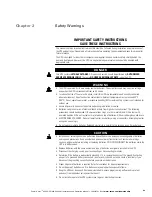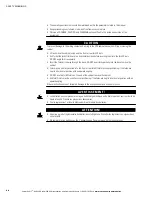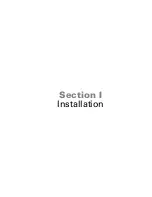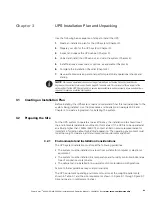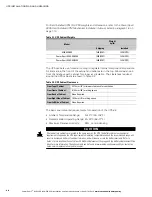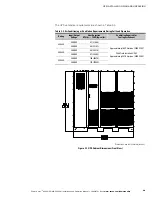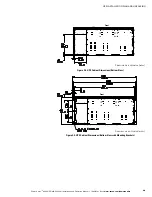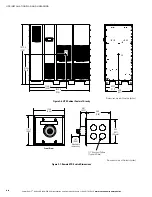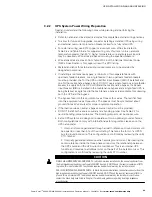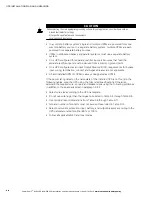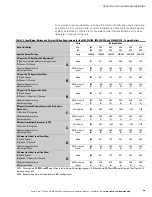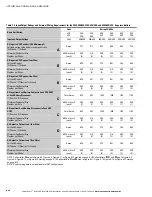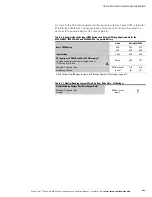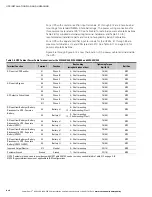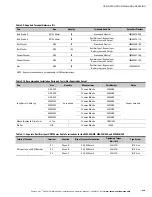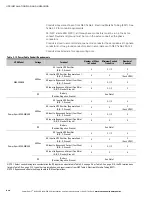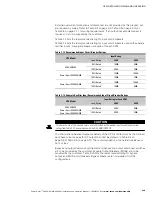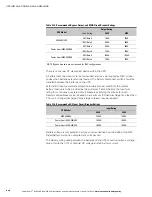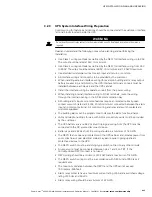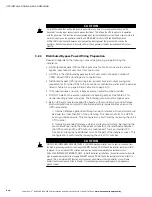
UPS INSTALLATION PLAN AND UNPACKING
Power Xpert
9395 UPS (450–550 kVA) Installation and Operation Manual
164201701 Rev 3
www.eaton.com/powerquality
3-7
3.2.2
UPS System Power Wiring Preparation
Read and understand the following notes while planning and performing the
installation:
Refer to national and local electrical codes for acceptable external wiring practices.
To allow for future kVA upgrades, consider installing a derated UPS using wiring
and external overcurrent protection breakers sized for a fully rated UPS.
For external wiring, use 90
°
C copper or aluminum wire. Wire sizes listed in
Table 3‐4 and Table 3‐5 are for copper wiring only. If wire is run in an ambient
temperature greater than 30
°
C, higher temperature wire and/or larger size wire
may be necessary. Wire sizes are based on using the specified breakers.
Wire ampacities are chosen from Table 310-16 of the National Electrical Code
®
(NEC
®
). Specification is for copper wire with a 90
°
C rating.
Material and labor for external wiring requirements are to be provided by
designated personnel.
If installing a maintenance bypass, a minimum of two separate feeds with
upstream feeder breakers, or a single feed with two upstream feeder breakers,
must be provided: one for the UPS or rectifier input breaker (RIB) (if installed) and
one for the maintenance bypass input. DO NOT use a single feed or a single feeder
breaker to supply both the UPS or RIB and the maintenance bypass. If a bypass
input breaker (BIB) is installed in the maintenance bypass and a single-feed UPS is
being installed, a single feed to the maintenance bypass is acceptable for supplying
both the UPS and the bypass.
The bypass feed into this equipment uses three or four wires. The rectifier feed
into this equipment uses three wires. The phases must be symmetrical about
ground (from a Wye source) for proper equipment operation.
If the load requires a neutral, a bypass source neutral must be provided.
DO NOT install both a source neutral and a bonding jumper. See Table 3‐7 for
neutral bonding jumper wire sizes. The bonding jumper must be copper wire.
Eaton UPS systems are designed to operate with two optional ground schemes.
Both configurations comply with international safety regulations (as seen on the
UPS name plate).
-
1. Internal reference generated through an earth reference. Ground current will
be equal to or less than 5% of the unit rating. This takes the form of a UPS N
bus to ground bond wire. This configuration is confirmed by reviewing the units
CTO number.
-
2. Internally generated reference which avoids ground current. By locating the
center reference inside the three phase conductors, the relationship between
the UPS source and the UPS output is maintained. This is an internal UPS
function and requires no additional work on the part of the installer or user. This
configuration is confirmed by reviewing the units CTO number.
C
A
U
T
I
O
N
SINGLE HIGH IMPEDANCE GROUND SOURCE - In North American installations, the neutral conductor from
the high impedance ground source of supply CANNOT be used. DO NOT bond the inverter center point (E12)
to ground: this is an internal UPS function and requires no additional work by the installer or user.
DUAL HIGH IMPEDANCE GROUND SOURCE - In North American installations, the neutral conductor from the
high impedance ground source of supply CANNOT be used. DO NOT bond the inverter center point (E12) to
ground: this is an internal UPS function and requires no additional work by the installer or user. Please
contact the Eaton help desk listed in Chapter 1 for additional guidance regarding dual high impedance
ground sources.



